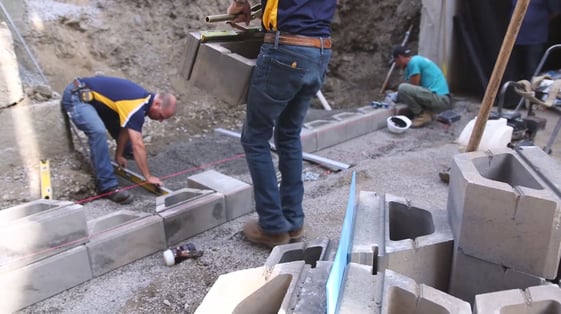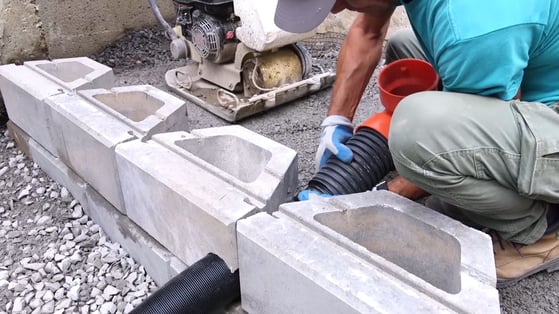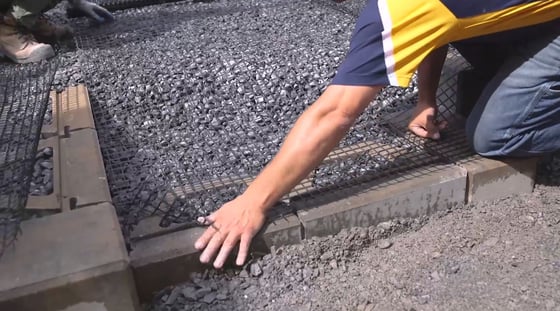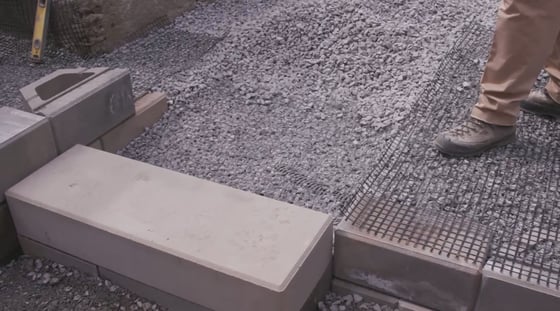In part 2, we covered how to set a base course efficiently. Now, Paver Pete explains drainage, backfill and grid reinforcement.
Drainage, Grid Reinforcement and Backfill
By using the right tools, we were able to set our base course of G-Force blocks in no time.

Here’s the steps we followed:
STEP 1:
Install a 4-inch bed of clean stone.
STEP 2:
Add densely graded stone, a pipe and a t-box to daylight.
We needed to elevate our drain tile for proper water evacuation.

STEP 3:
Lay a geogrid.
We chose a biaxial geogrid, the Gator Grid GG 50-50 from Alliance. We didn’t need to use a biaxial type of grid, but we chose this type anyway because we have return walls for the steps leading to the upper elevation.

STEP 4:
Install an embedded course underneath the Raffinato steps and put in a 4-feet deep layer of biaxial grid. It will stabilize the clean #57 stone we are using as backfill.

STEP 5:
Bring the steps up to grade. Add solid concrete blocks behind them.
STEP 6:
Continue adding blocks. Core fill and backfill.
BUILDING A WALL THAT NEEDS REINFORCEMENT, BUT CAN'T FIND WHAT YOU NEED IN THE TECHO-SPEC GUIDE?
CHECK OUT OUR



